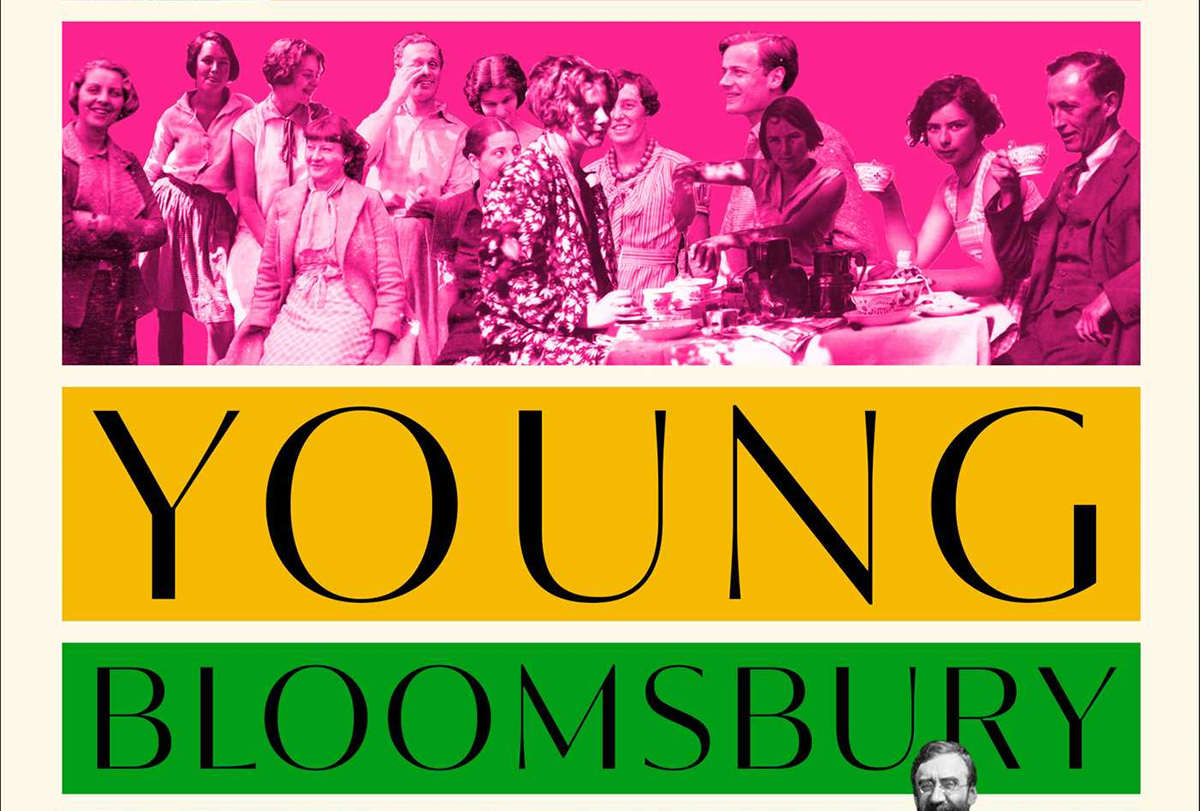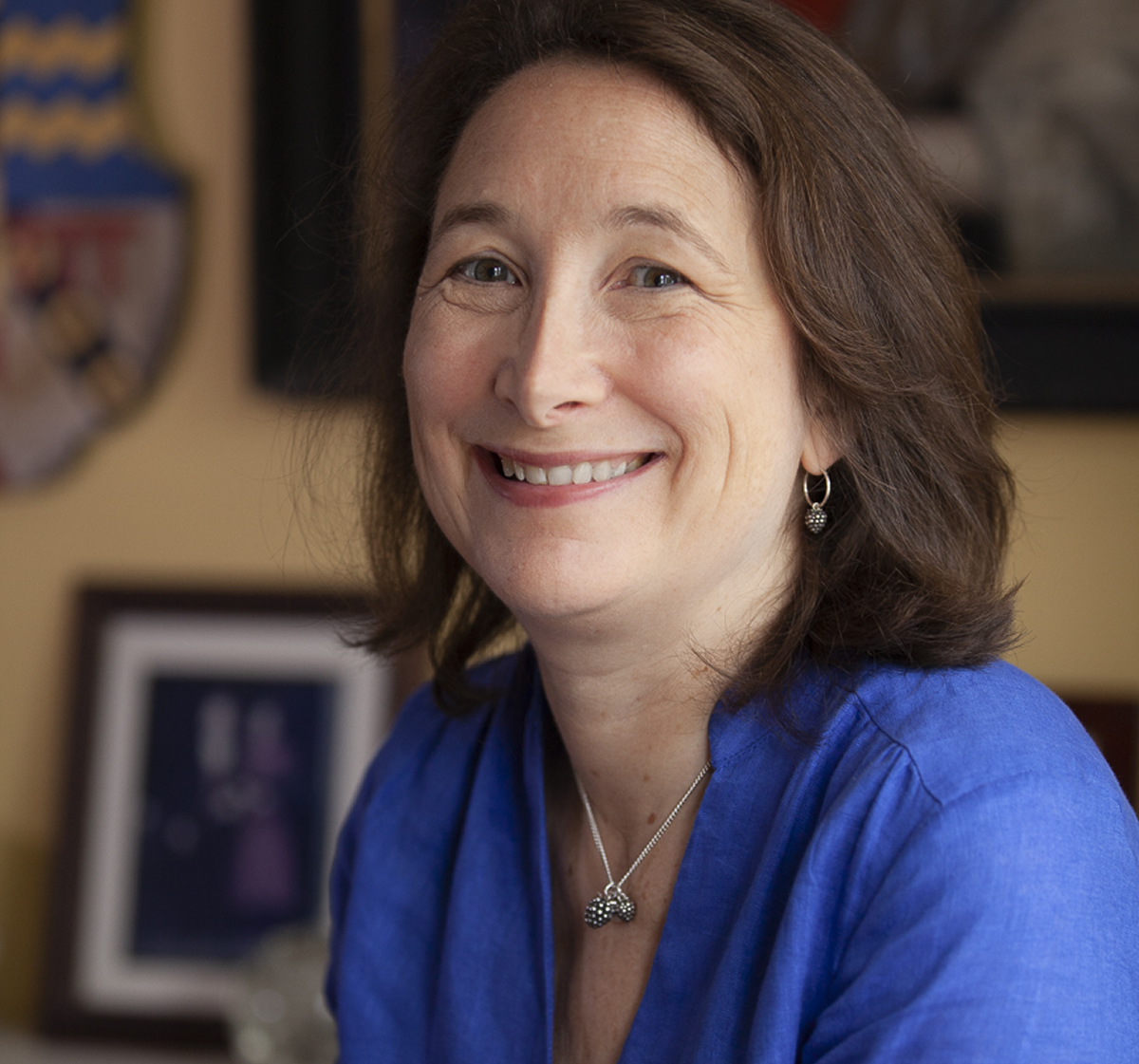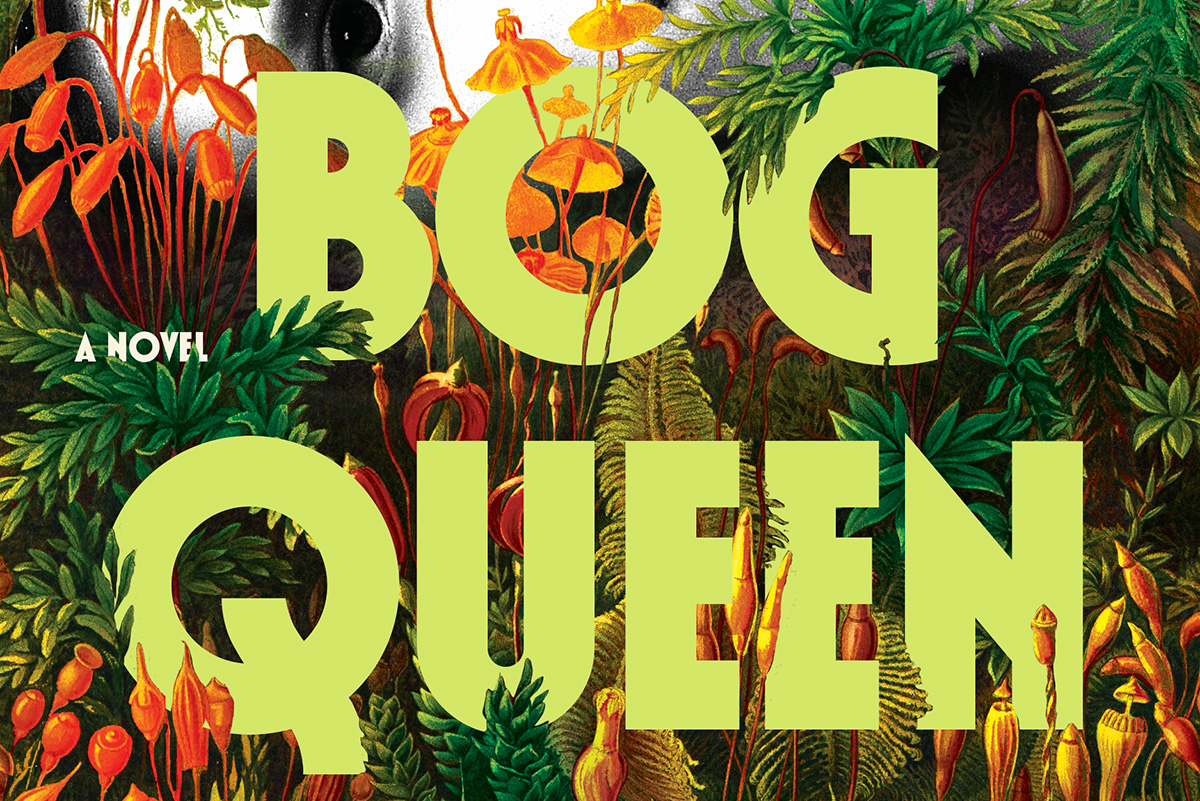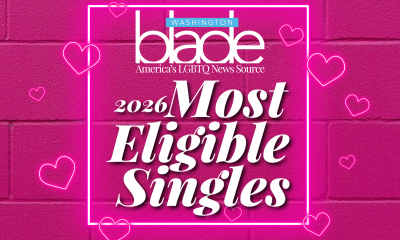Books
‘Young Bloomsbury’ explores queer family of choice in 1920s England
Meet the generation ‘That Redefined Love, Freedom, and Self-Expression’

Safe spaces. Gender bending. Families of choice. Gender fluidity. Young queers being seen by their elders (hetero and queer). Throuples. Banned books. Conversion therapy.
At a party, a couple, two beautiful bisexual women, sing the latest show tunes and dance. One of them, wearing a purple dress, plays her saxophone.
We see you, Gen Z!
But you weren’t the first to embrace queerness in all its fab permutations.
A century ago in London at a time when being queer was illegal, a group of queer, gender-bending writers and artists — young members of the Bloomsbury group – broke through sexual and gender boundaries and formed families of choice.
In 1923, Henrietta Bingham and Mina Kirstein were the bisexual couple that danced and sang show tunes at the party. Bingham in her purple dress played the sax, author Nino Strachey writes in her illuminating, entertaining new book “Young Bloomsbury: The Generation That Redefined Love, Freedom, and Self-Expression in 1920s England.”
If you’ve had a queer friend rave about the gender-bending in “Orlando” by Virginia Woolf, or if you’ve seen the movie “Maurice” (of the novel with the same name), you’ve heard of the Bloomsbury group.
For Nino Strachey, the Bloomsbury group is up close and personal.
For starters, Nino Strachey is a descendent of Lytton Strachey, the queer, razor-sharp writer and founding member of the Bloomsbury group. She is the last member of the Strachey family to have grown up at Sutton Court in Somerset (U.K.), home of the Strachey family for more than 300 years.
Recently, Nino Strachey talked with the Blade about why she wrote “Young Bloomsbury,” the parallels between Young Bloomsbury in the 1920s and Gen Z today and the reaction to her book.
The formation of the Bloomsbury group began after Virginia and Vanessa Stephen’s father died in 1904. Virginia Stephens became Virginia Woolf after her marriage to Leonard Woolf. Vanessa Stephens became Vanessa Bell after her marriage to Clive Bell.
The Stephen sisters “escaped” to 46 Gordon Square in London, Strachey writes in “Young Bloomsbury.”
There, they could have a “life free from adult interference,” Strachey writes.
The Stephen sisters got to know their brothers’ — Thoby and Adrian — Cambridge University friends. These friends included John Maynard Keynes (who would become an acclaimed economist), Lytton Strachey, who would transform the art of biography, Duncan Grant who would revolutionize the art world and E.M. Forster, who would write “Maurice,” a novel with a queer love story that wouldn’t be published until after his death in 1970.
These queer artists and writers found “new ways to connect,” Strachey writes, “a commitment to honest communication between the sexes, to freedom in creativity, to openness in all sexual matters.”
The group was beginning to have critical support at the onset of World War I. Though the group’s (which Strachey calls “Old Bloomsbury”) activities broke down during the war, the cohort’s work took off after the war.
By the 1920s, the Old Bloomsbury artists and writers, then nearly in their 40s, had become successful. Virginia Woolf was photographed in Vogue. Lytton Strachey’s biography “Eminent Victorians,” a satirical takedown of Florence Nightingale and other renowned Victorians, was the talk of the town. Duncan Grant’s paintings were popular.
A group of queer young writers and artists, who Nino Strachey calls Young Bloomsbury, became lovers, friends, and creative collaborators with members of Old Bloomsbury.
Called the “Bright Young Things” at the time by the press and notables such as novelist Evelyn Waugh, members of Young Bloomsbury included: Julia Strachey, niece of Lytton Strachey and author of the novel “Cheerful Weather for the Wedding”; journalist and literary critic Raymond Mortimer; music critic and novelist Eddy Sackville-West; journalist and socialist politician John Strachey; sculptor Stephen “Tommy” Tomlin and artist and illustrator Stephen Tennant.
Members of Bloomsbury who were younger than Old Bloomsbury and older than the group’s younger members included the painter and decorative artist Dora Carrington; and the bookseller, publisher and writer David “Bunny” Garnett.
Nino Strachey didn’t write “Young Bloomsbury” as an academic project. Her reasons for writing the book were personal.
“I wrote [Young Bloomsbury],” Strachey said, “because my child identifies as gender fluid and queer.”
“It’s been a delight,” she added, “Something for us to do together.”
It’s been lovely for Nino Strachey to look at the queer history of the Strachey family and their friends and lovers, and to find queer role models going back to the 19th century.
Strachey became interested in writing “Young Bloomsbury” a few years ago. “I was working for the National Trust,” Strachey said, “I was researching the house called Knole – the home of Vita Sackville-West [poet, novelist, gardener and a lover of Virginia Woolf] and her cousin Eddy Sackville-West.”
In the midst of this research, one of Nino Strachey’s colleagues told her that she’d found some boxes of Strachey family papers.
Until then, Nino Strachey hadn’t known that, in the 1920s, her cousin John Strachey had lived with Eddy Sackville-West in London. From their letters, “I learned that they were incredibly open about their gender identity and sexuality,” Strachey said. “I wouldn’t have expected that 100 years ago! I don’t think anybody had looked into the boxes since the 1920s.”
“I thought: this is something I must write about,” Strachey said.
In the past, people have concentrated so much on who had sex with whom in Bloomsbury, that they’ve forgotten how important friendships were to the group, Strachey said. “They would be lovers with each other. Have quarrels,” she said, “but they cared for each other. They formed life-long friendships.”
They didn’t have the words for it a century ago but Bloomsbury became a family of choice.
At a time when a man could be arrested for carrying a powder puff in public or a queer person subjected to conversion therapy, Bloomsbury became a safe space for young queer people.
“Older Bloomsbury members took on a parental role for queer young artists and writers,” Strachey said. “They nurtured not only their careers but their personal life choices at a time when many of their parents weren’t supportive.”
Young Bloomsbury members would be pressured to undergo conversion therapy, Strachey said. “It was legal then. It was horrible,” she said, “involving painful injections.”
Conversion therapy wasn’t the only way in which queerness was repressed. Then as now, books with queer stories were banned.
Bloomsbury rallied around when lesbian writer Radclyffe Hall’s novel “The Well of Loneliness” was prosecuted for obscenity. Virginia Woolf and E.M. Forster wrote letters of support for Hall. The book’s publication was blocked because it was judged to be obscene. (It was published in the U.K. in 1959.)
“You might have thought that ‘Orlando’ [the gender-bending novel by Virginia Woolf] would have been prosecuted for being obscene,” Strachey said, “but luckily that didn’t happen because it’s couched in this wonderful, historical, fanciful language.”
Strachey loved learning about how both Vita Sackville-West (with her masculine presentation) and Eddy Sackville-West (with his makeup and eye shadow) inspired Woolf’s writing of “Orlando.” “Virginia put these people into a single character who survives for 400 years,” Strachey said.
“Orlando,” which remains a “contemporary” classic novel, is having a moment today, Strachey said. “It’s on stage in London. For the first time, with a nonbinary actor playing the lead,” she added, “It’s getting rave reviews!”
People have misperceptions about Virginia Woolf, Strachey said. “Some interpretations see her, perhaps, as being quite harsh and judgmental,” Strachey said.
Yet, Woolf could be “absolutely supportive” and quite funny, Strachey said. “She and Lytton were really naughty,” she said, “they loved to tease people!”
“There’s a series of photographs where they’re together and smiling, and you can see how they’re riffing off each other,” Strachey said.
Virginia Woolf and other members of Bloomsbury listened to the romantic troubles of younger Bloomsbury members when their families wouldn’t. “Eddy Sackville-West read his diaries to Virginia Woolf,” Strachey said, “He talked to her about his love life.”
Old and Young Bloomsbury members loved Noel Coward and musicals. Younger members of Bloomsbury clued older members in on new technologies from radio broadcasting to flying lessons to movies to gossip columns. Young Bloomsbury “was tuned into the world of the stage – to film actresses like Mary Pickford,” Strachey said.
Strachey has been heartened by the feedback “Young Bloomsbury” has received. Not just from journalists and reviewers, but from people at festivals. “The warmest moments have been when people come up to me,” Strachey said, “to talk about chosen families and queer role models.”
“Cis, hetero couples ask: How can we support trans young people,” she added.
This is important to Strachey. We think society is so inclusive, but it’s not, she said.
“The statistics for LGBTQ+ youth regarding self-harm, bullying, prejudice remain really high,” Strachey said.
Anything one can do to raise support and awareness is a good thing, she added.

The Blade may receive commissions from qualifying purchases made via this post.
Books
Feminist fiction fans will love ‘Bog Queen’
A wonderful tale of druids, warriors, scheming kings, and a scientist

‘Bog Queen’
By Anna North
c.2025, Bloomsbury
$28.99/288 pages
Consider: lost and found.
The first one is miserable – whatever you need or want is gone, maybe for good. The second one can be joyful, a celebration of great relief and a reminder to look in the same spot next time you need that which you first lost. Loss hurts. But as in the new novel, “Bog Queen” by Anna North, discovery isn’t always without pain.

He’d always stuck to the story.
In 1961, or so he claimed, Isabel Navarro argued with her husband, as they had many times. At one point, she stalked out. Done. Gone, but there was always doubt – and now it seemed he’d been lying for decades: when peat cutters discovered the body of a young woman near his home in northwest England, Navarro finally admitted that he’d killed Isabel and dumped her corpse into a bog.
Officials prepared to charge him.
But again, that doubt. The body, as forensic anthropologist Agnes Lundstrom discovered rather quickly, was not that of Isabel. This bog woman had nearly healed wounds and her head showed old skull fractures. Her skin glowed yellow from decaying moss that her body had steeped in. No, the corpse in the bog was not from a half-century ago.
She was roughly 2,000 years old.
But who was the woman from the bog? Knowing more about her would’ve been a nice distraction for Agnes; she’d left America to move to England, left her father and a man she might have loved once, with the hope that her life could be different. She disliked solitude but she felt awkward around people, including the environmental activists, politicians, and others surrounding the discovery of the Iron Age corpse.
Was the woman beloved? Agnes could tell that she’d obviously been well cared-for, and relatively healthy despite the injuries she’d sustained. If there were any artifacts left in the bog, Agnes would have the answers she wanted. If only Isabel’s family, the activists, and authorities could come together and grant her more time.
Fortunately, that’s what you get inside “Bog Queen”: time, spanning from the Iron Age and the story of a young, inexperienced druid who’s hoping to forge ties with a southern kingdom; to 2018, the year in which the modern portion of this book is set.
Yes, you get both.
Yes, you’ll devour them.
Taking parts of a true story, author Anna North spins a wonderful tale of druids, vengeful warriors, scheming kings, and a scientist who’s as much of a genius as she is a nerd. The tale of the two women swings back and forth between chapters and eras, mixed with female strength and twenty-first century concerns. Even better, these perfectly mixed parts are occasionally joined by a third entity that adds a delicious note of darkness, as if whatever happens can be erased in a moment.
Nah, don’t even think about resisting.
If you’re a fan of feminist fiction, science, or novels featuring kings, druids, and Celtic history, don’t wait. “Bog Queen” is your book. Look. You’ll be glad you found it.

This past year, you’ve often had to make do.
Saving money here, resources there, being inventive and innovative. It’s a talent you’ve honed, but isn’t it time to have the best? Yep, so grab these Ten Best of 2025 books for your new year pleasures.
Nonfiction
Health care is on everyone’s mind now, and “A Living: Working-Class Americans Talk to Their Doctor” by Michael D. Stein, M.D. (Melville House, $26.99) lets you peek into health care from the point of view of a doctor who treats “front-line workers” and those who experience poverty and homelessness. It’s shocking, an eye-opening book, a skinny, quick-to-read one that needs to be read now.
If you’ve been doing eldercare or caring for any loved one, then “How to Lose Your Mother: A Daughter’s Memoir” by Molly Jong-Fast (Viking, $28) needs to be in your plans for the coming year. It’s a memoir, but also a biography of Jong-Fast’s mother, Erica Jong, and the story of love, illness, and living through the chaos of serious disease with humor and grace. You’ll like this book especially if you were a fan of the author’s late mother.
Another memoir you can’t miss this year is “Between the Devil and the Deep Blue Sea: A Veteran’s Memoir” by Khadijah Queen (Legacy Lit, $30.00). It’s the story of one woman’s determination to get out of poverty and get an education, and to keep her head above water while she goes below water by joining the U.S. Navy. This is a story that will keep you glued to your seat, all the way through.
Self-improvement is something you might think about tackling in the new year, and “Replaceable You: Adventures in Human Anatomy” by Mary Roach (W.W. Norton & Company, $28.99) is a lighthearted – yet real and informative – look at the things inside and outside your body that can be replaced or changed. New nose job? Transplant, new dental work? Learn how you can become the Bionic Person in real life, and laugh while you’re doing it.
The science lover inside you will want to read “The Grave Robber: The Biggest Stolen Artifacts Case in FBI History and the Bureau’s Quest to Set Things Right” by Tim Carpenter (Harper Horizon, $29.99). A history lover will also want it, as will anyone with a craving for true crime, memoir, FBI procedural books, and travel books. It’s the story of a man who spent his life stealing objects from graves around the world, and an FBI agent’s obsession with securing the objects and returning them. It’s a fascinating read, with just a little bit of gruesome thrown in for fun.
Fiction
Speaking of a little bit of scariness, “Don’t Forget Me, Little Bessie” by James Lee Burke (Atlantic Monthly Press, $28) is the story of a girl named Bessie and her involvement with a cloven-hooved being who dogs her all her life. Set in still-wild south Texas, it’s a little bit western, part paranormal, and completely full of enjoyment.
“Evensong” by Stewart O’Nan (Atlantic Monthly Press, $28) is a layered novel of women’s friendships as they age together and support one another. The characters are warm and funny, there are a few times when your heart will sit in your throat, and you won’t be sorry you read it. It’s just plain irresistible.
If you need a dark tale for what’s left of a dark winter season, then “One of Us” by Dan Chaon (Henry Holt, $28), it it. It’s the story of twins who become orphaned when their Mama dies, ending up with a man who owns a traveling freak show, and who promises to care for them. But they can’t ever forget that a nefarious con man is looking for them; those kids can talk to one another without saying a word, and he’s going to make lots of money off them. This is a sharp, clever novel that fans of the “circus” genre shouldn’t miss.
“When the Harvest Comes” by Denne Michele Norris (Random House, $28) is a wonderful romance, a boy-meets-boy with a little spice and a lot of strife. Davis loves Everett but as their wedding day draws near, doubts begin to creep in. There’s homophobia on both sides of their families, and no small amount of racism. Beware that there’s some light explicitness in this book, but if you love a good love story, you’ll love this.
Another layered tale you’ll enjoy is “The Elements” by John Boyne (Henry Holt, $29.99), a twisty bunch of short stories that connect in a series of arcs that begin on an island near Dublin. It’s about love, death, revenge, and horror, a little like The Twilight Zone, but without the paranormal. You won’t want to put down, so be warned.
If you need more ideas, head to your local library or bookstore and ask the staff there for their favorite reads of 2025. They’ll fill your book bag and your new year with goodness.
Season’s readings!
The Blade may receive commissions from qualifying purchases made via this post.
Books
This gay author sees dead people

‘Are You There Spirit? It’s Me, Travis’
By Travis Holp
c.2025, Spiegel and Grau
$28/240 pages
Your dad sent you a penny the other day, minted in his birth year.
They say pennies from heaven are a sign of some sort, and that makes sense: You’ve been thinking about him a lot lately. Some might scoff, but the idea that a lost loved one is trying to tell you he’s OK is comforting. So read the new book, “Are You There, Spirit? It’s Me, Travis” by Travis Holp, and keep your eyes open.

Ever since he was a young boy growing up just outside Dayton, Ohio, Travis Holp wanted to be a writer. He also wanted to say that he was gay but his conservative parents believed his gayness was some sort of phase. That, and bullying made him hide who he was.
He also had to hide his nascent ability to communicate with people who had died, through an entity he calls “Spirit.” Eventually, though it left him with psychological scars and a drinking problem he’s since overcome, Holp was finally able to talk about his gayness and reveal his otherworldly ability.
Getting some people to believe that he speaks to the dead is still a tall order. Spirit helps naysayers, as well as Holp himself.
Spirit, he says, isn’t a person or an essence; Spirit is love. Spirit is a conduit of healing and energy, speaking through Holp in symbolic messages, feelings, and through synchronistic events. For example, Holp says coincidences are not coincidental; they’re ways for loved ones to convey messages of healing and energy.
To tap into your own healing Spirit, Holp says to trust yourself when you think you’ve received a healing message. Ignore your ego, but listen to your inner voice. Remember that Spirit won’t work on any fixed timeline, and its only purpose is to exist.
And keep in mind that “anything is possible because you are an unlimited being.”
You’re going to want very much to like “Are You There, Spirit? It’s Me, Travis.” The cover photo of author Travis Holp will make you smile. Alas, what you’ll find in here is hard to read, not due to content but for lack of focus.
What’s inside this book is scattered and repetitious. Love, energy, healing, faith, and fear are words that are used often – so often, in fact, that many pages feel like they’ve been recycled, or like you’ve entered a time warp that moves you backward, page-wise. Yes, there are uplifting accounts of readings that Holp has done with clients here, and they’re exciting but there are too few of them. When you find them, you’ll love them. They may make you cry. They’re exactly what you need, if you grieve. Just not enough.
This isn’t a terrible book, but its audience might be narrow. It absolutely needs more stories, less sentiment; more tales, less transcendence and if that’s your aim, go elsewhere. But if your soul cries for comfort after loss, “Are You There, Spirit? It’s Me, Travis” might still make sense.
The Blade may receive commissions from qualifying purchases made via this post.
-

 National5 days ago
National5 days agoWhat to watch for in 2026: midterms, Supreme Court, and more
-

 District of Columbia5 days ago
District of Columbia5 days agoImperial Court of Washington drag group has ‘dissolved’
-

 Colombia4 days ago
Colombia4 days agoGay Venezuelan man who fled to Colombia uncertain about homeland’s future
-

 Arts & Entertainment4 days ago
Arts & Entertainment4 days ago2026 Most Eligible LGBTQ Singles nominations



















